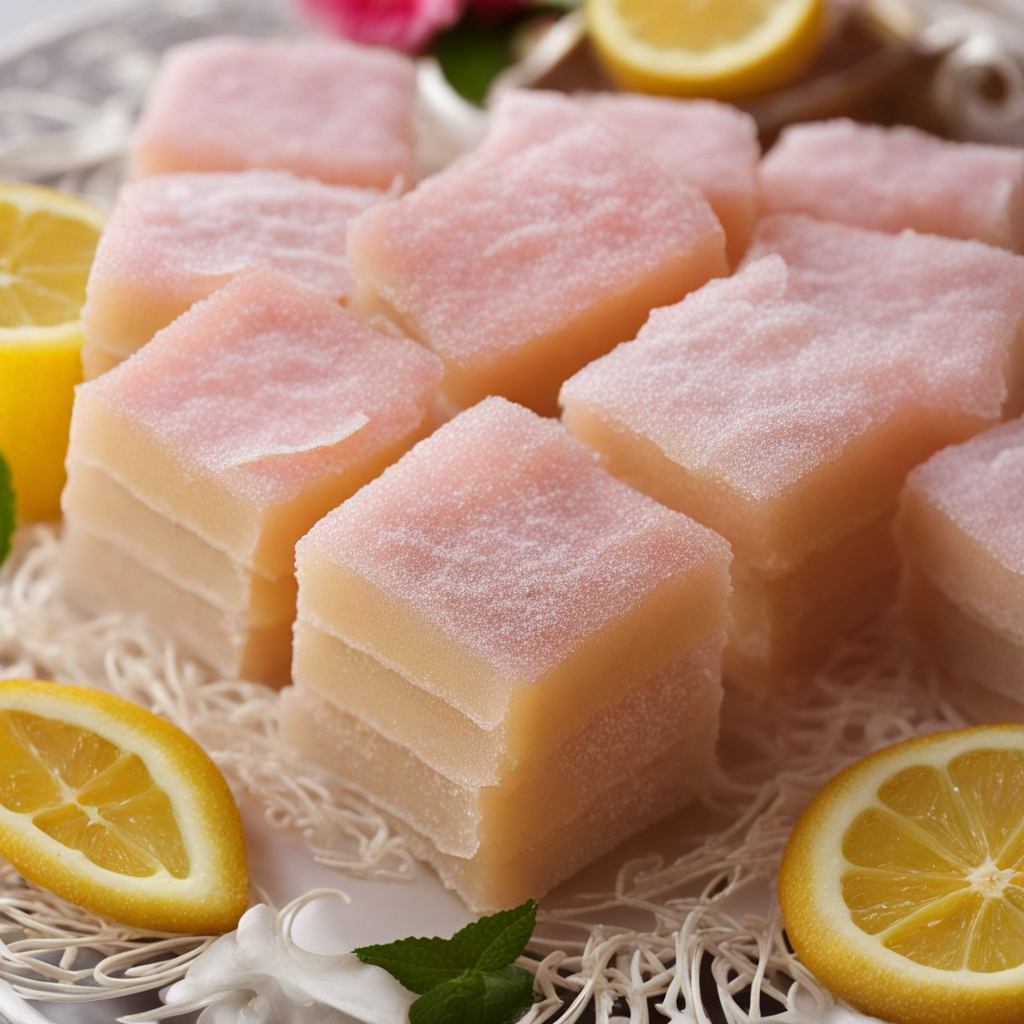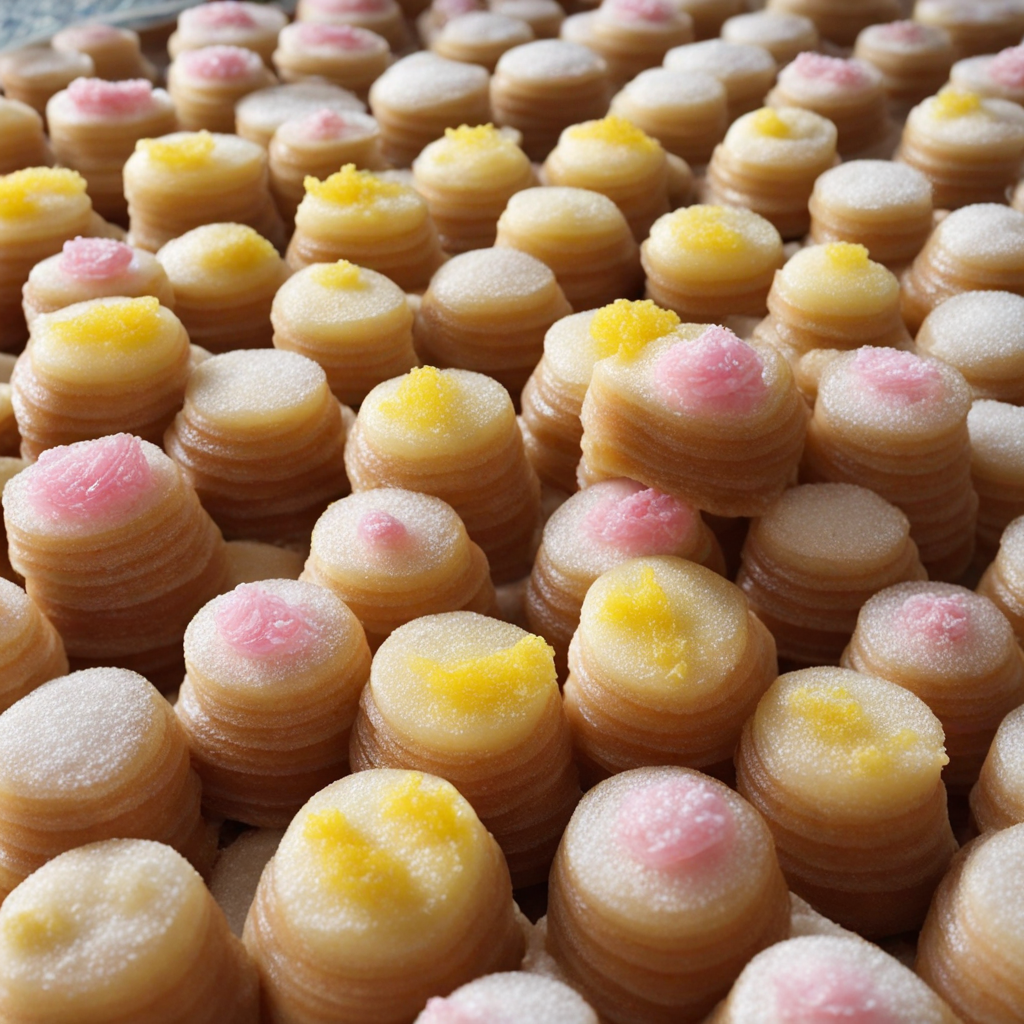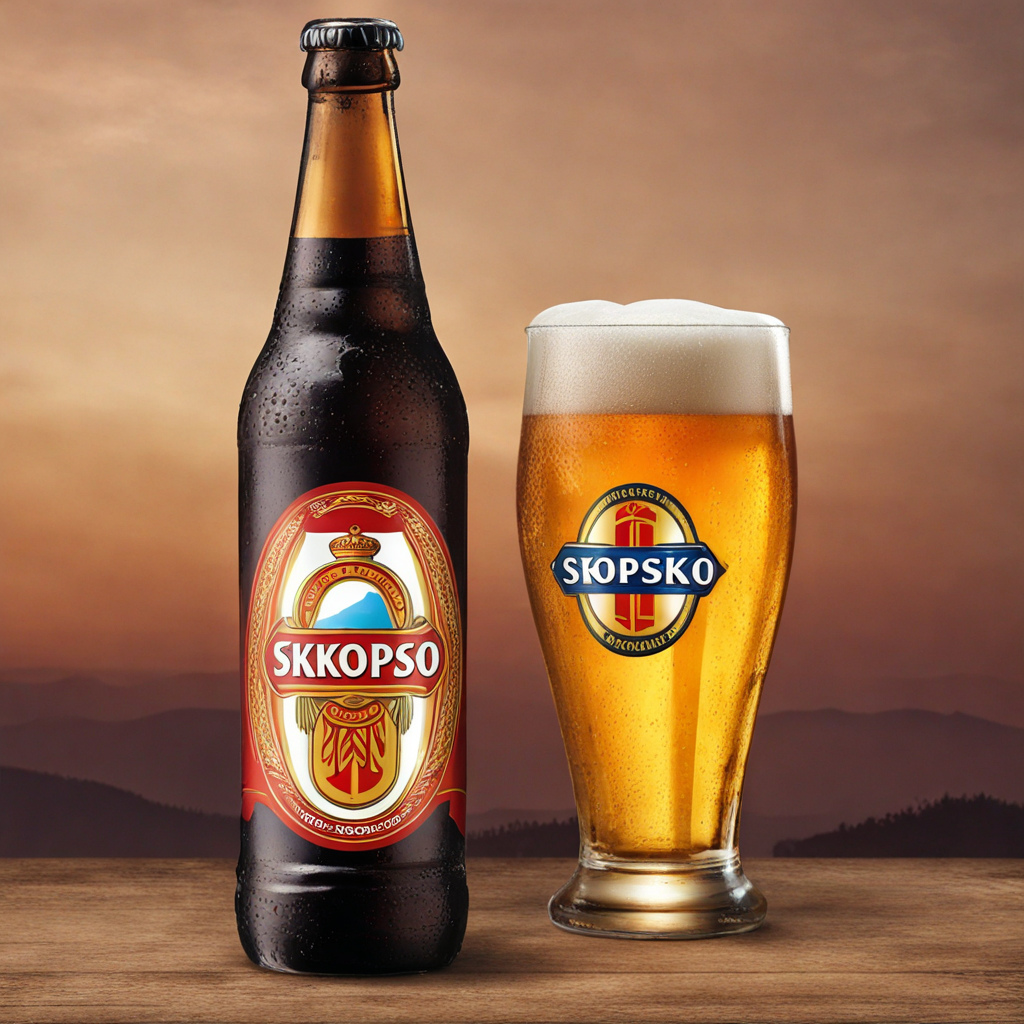Lokum
Lokum, often referred to as Turkish delight, is a traditional confectionery that has found its roots in various Balkan countries, including North Macedonia. This delightful treat is made from starch and sugar, resulting in a chewy yet tender texture that melts in your mouth. The base is often flavored with a variety of natural ingredients such as rosewater, lemon, or orange, infusing it with a hint of floral or citrusy notes. It is often dusted with powdered sugar or desiccated coconut to prevent sticking, adding a light sweetness that complements the flavors of the lokum itself. In North Macedonia, lokum is not just a sweet but a part of the culture and tradition. It is commonly enjoyed during special occasions and gatherings, offering a sense of hospitality when served to guests. Variations may include nuts like pistachios or walnuts, adding a delightful crunch and depth of flavor to the soft jelly-like consistency. The vibrant colors of lokum, ranging from deep red to bright green, make it not only a treat for the palate but also a feast for the eyes, enhancing its appeal during celebrations. One of the most enchanting aspects of lokum is its ability to evoke nostalgia and a sense of place. The flavors transport you to the heart of North Macedonia, where the combination of natural ingredients and traditional methods create a unique taste experience. Each bite is a revelation, where the sweetness is balanced by subtle floral or fruity undertones, inviting you to explore the rich culinary heritage of this fascinating region. Whether savored alone or paired with a cup of strong coffee or tea, lokum promises a delightful journey for your taste buds.
How It Became This Dish
Локум: A Sweet Journey Through Time in North Macedonia Introduction Локум, known in English as Turkish delight, is a beloved confectionery that holds a special place in the heart of North Macedonia and in the culinary tapestry of the broader Balkan region. This sweet treat has a rich and multifaceted history that reflects the cultural exchanges and influences that have shaped the area over centuries. In this exploration, we will delve into the origins of локум, its cultural significance, and how it has developed over time, particularly in North Macedonia. Origins of Локум The origins of локум can be traced back to the Middle East, with its earliest forms appearing in the Ottoman Empire. It is believed that the treat was first created in the 15th century, although some accounts suggest that it may have even older roots in ancient confectionery practices. The word "lokum" itself is derived from the Arabic "rahat al-hulkum," which translates to "comfort of the throat." This name reflects the soft, gelatinous texture that characterizes the sweet. While its precise beginnings remain somewhat murky, the 19th century saw the popularization of локум across the Ottoman Empire, thanks in large part to confectioners in Istanbul who began to produce it in large quantities. Its spread into the Balkans coincided with the expansion of the Ottoman Empire, which brought with it a melting pot of culinary traditions. As the empire encompassed various regions, including present-day North Macedonia, локум became a staple of local diets, adapted with regional flavors and ingredients. Cultural Significance In North Macedonia, локум is more than just a sweet treat; it is a symbol of hospitality and tradition. The confection is often served during celebrations, holidays, and family gatherings. It embodies the spirit of sharing and generosity, as offering sweets to guests is a cherished custom in Macedonian culture. Whether during religious celebrations such as Easter or during family feasts, локум finds its way to the table, signifying warmth and welcome. Moreover, локум is often associated with the concept of "домаќинство" (domachinstvo), which refers to the idea of good housekeeping and the nurturing of family ties. The preparation of локум can be a communal activity, where family members come together to create this beloved confection, passing down recipes and techniques through generations. This practice reinforces familial bonds and preserves culinary heritage. Ingredients and Preparation The beauty of локум lies in its versatility, as it can be made with a variety of flavors and ingredients. The basic recipe consists of sugar, water, cornstarch, and flavoring agents, which may include rosewater, lemon, mastic, or nuts such as pistachios and walnuts. The process begins with dissolving the sugar in water and slowly adding cornstarch to create a thick, gelatinous mixture. This mixture is then flavored and poured into molds to set, often dusted with powdered sugar or cornstarch to prevent sticking. Over time, local variations have arisen, with different regions in North Macedonia experimenting with unique flavors and presentations. Some may incorporate local fruits or even chocolate, reflecting the agricultural bounty of the region. This adaptability has allowed локум to remain relevant and cherished, evolving alongside North Macedonia's culinary landscape. Historical Development As the 20th century unfolded, North Macedonia experienced significant political and social changes that influenced its culinary traditions, including локум. The impact of World War I, the interwar period, and World War II brought about shifts in trade and agriculture, affecting the availability of ingredients. Despite these challenges, локум remained a beloved treat, often made at home as a way to preserve tradition during difficult times. In the latter half of the 20th century, especially after North Macedonia gained independence from Yugoslavia in 1991, there was a resurgence of interest in national identity and heritage. This revival included a renewed appreciation for traditional foods, including локум. Artisanal producers began to emerge, crafting локум with an emphasis on quality ingredients and traditional methods. These producers often seek to honor the historical roots of the confection while also innovating to attract modern palates. Today, локум is not only a domestic delicacy but also a source of national pride. It is often showcased at local festivals and markets, where artisans display their craft and share the stories behind their creations. This celebration of локум is part of a broader movement to promote North Macedonian cuisine and culture on both national and international stages. Conclusion The history of локум in North Macedonia is a testament to the enduring nature of culinary traditions and the ways in which food can serve as a bridge between past and present. From its origins in the Ottoman Empire to its status as a beloved symbol of hospitality and celebration in North Macedonia, локум embodies the cultural richness of the region. As it continues to evolve, this sweet treat remains a cherished link to the past, a source of comfort, and a flavor of home for many. In an age of globalization, where culinary practices often become homogenized, локум serves as a reminder of the importance of preserving local traditions. It is a sweet token of shared history, cultural significance, and familial bonds, ensuring that the legacy of this delightful confection will endure for generations to come. Whether enjoyed at a festive gathering or as a simple treat to savor, локум invites us to pause, reflect, and celebrate the flavors of life that connect us all.
You may like
Discover local flavors from North Macedonia







